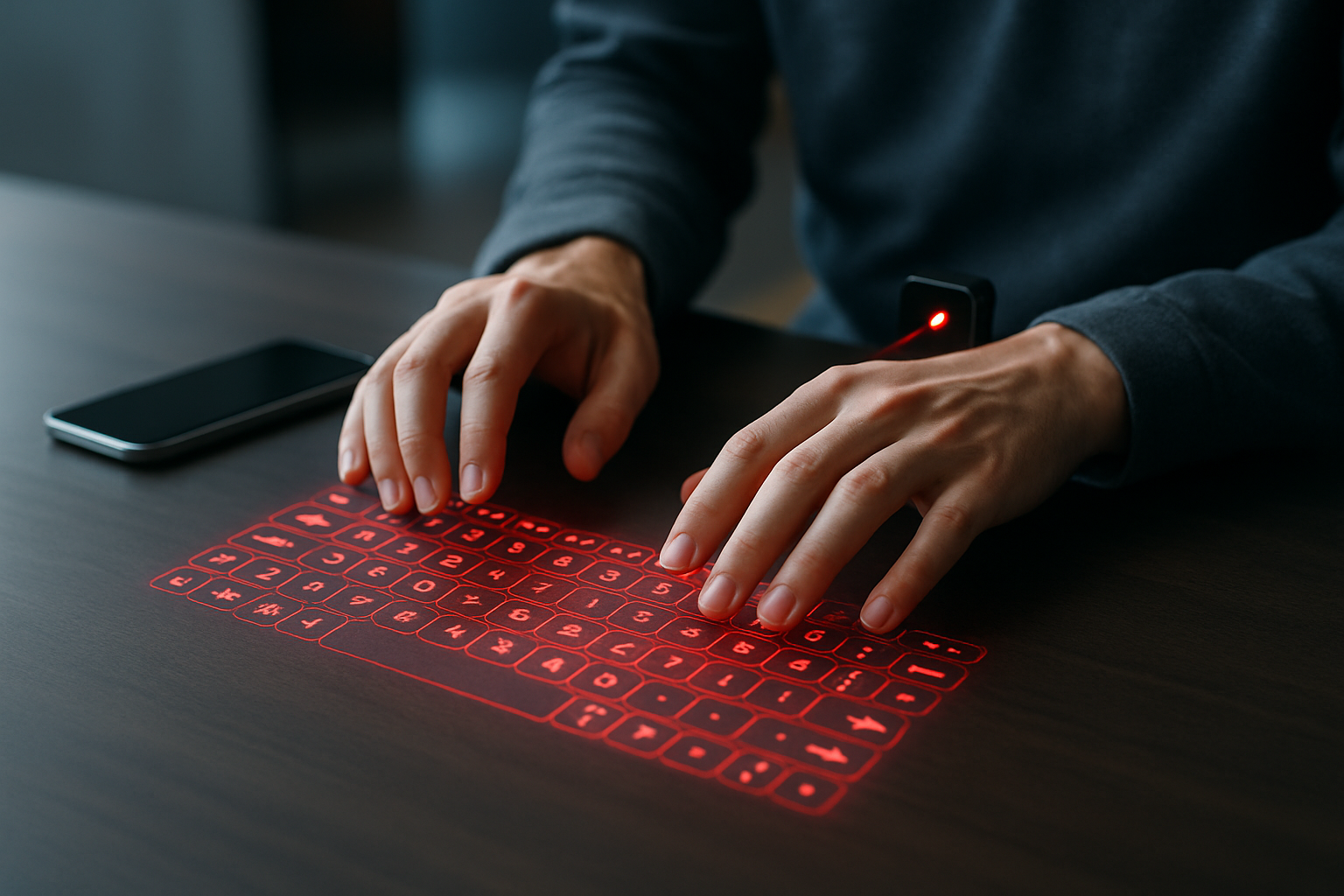Holographic Keyboards: Typing in Thin Air
Imagine a world where your desk is clutter-free, yet you can type as efficiently as ever. This isn't a scene from a sci-fi movie, but the reality that holographic keyboards are ushering in. These futuristic input devices are transforming how we interact with our digital devices, offering a blend of cutting-edge technology and sleek, space-saving design. As we delve into the world of holographic keyboards, we'll explore their inner workings, current applications, and the potential they hold for reshaping our digital interactions.

How Holographic Keyboards Work
At the heart of holographic keyboard technology lies a clever combination of optics and sensor systems. A small projector creates the image of a keyboard on a flat surface, while an infrared light plane hovers just above this projection. When a user’s fingers break this infrared plane, cameras or sensors detect the movement and translate it into keystrokes. Advanced algorithms interpret these movements, distinguishing between intentional key presses and accidental gestures.
The Technology Behind the Magic
The precision of holographic keyboards relies heavily on cutting-edge sensor technology and sophisticated software algorithms. Modern systems employ high-resolution cameras and depth sensors to track finger movements with incredible accuracy. Machine learning algorithms continuously improve the keyboard’s responsiveness, adapting to individual typing styles and reducing errors over time. This fusion of hardware and software creates an increasingly seamless typing experience that rivals traditional physical keyboards.
Current Applications and Market Impact
While still in the early stages of widespread adoption, holographic keyboards are finding their way into various sectors. They’re particularly appealing in medical settings, where maintaining a sterile environment is crucial. Surgeons can access patient information without touching potentially contaminated surfaces. In public spaces, these keyboards offer a hygienic alternative to shared physical keyboards, a consideration that has gained importance in the post-pandemic world.
The market for holographic keyboards is still nascent but growing rapidly. Current estimates place the price range for consumer-grade holographic keyboard devices between $100 to $300, with more advanced systems for specialized applications costing significantly more. As the technology matures and production scales up, these prices are expected to decrease, potentially leading to wider adoption in both consumer and professional markets.
Challenges and Future Developments
Despite their futuristic appeal, holographic keyboards face several challenges. The lack of tactile feedback can be disorienting for users accustomed to physical keys, leading to slower typing speeds and increased errors. Additionally, the technology’s reliance on specific lighting conditions can limit its usefulness in varied environments. However, researchers are actively working on solutions, including haptic feedback systems that create the sensation of key presses and improved projection technologies that work well in diverse lighting conditions.
Looking ahead, the future of holographic keyboards is intertwined with developments in augmented reality (AR) and virtual reality (VR). As these technologies become more prevalent, holographic keyboards could serve as a bridge between physical and digital interfaces, allowing users to interact with virtual environments in more intuitive ways. The potential applications extend beyond typing, encompassing gesture-based controls for smart homes, immersive gaming experiences, and even holographic musical instruments.
The Ergonomic Advantage
One of the most compelling arguments for holographic keyboards is their potential ergonomic benefits. Traditional keyboards force users into fixed positions, often leading to strain and repetitive stress injuries. Holographic keyboards, by contrast, can be projected onto any flat surface at any angle, allowing users to type in more natural, comfortable positions. This flexibility could revolutionize workplace ergonomics, reducing the incidence of typing-related injuries and improving overall comfort for long-duration computer use.
As holographic keyboards continue to evolve, they promise to reshape our interaction with digital devices. While challenges remain, the technology’s potential for creating more flexible, hygienic, and ergonomic input methods is undeniable. As we move towards an increasingly digital future, holographic keyboards stand poised to play a significant role in bridging the gap between our physical world and our digital interfaces, typing us into a new era of human-computer interaction.





